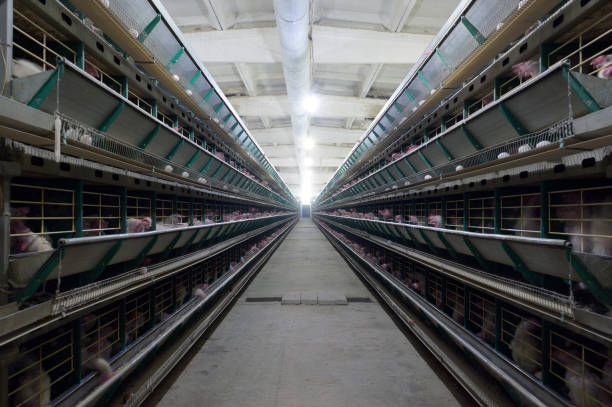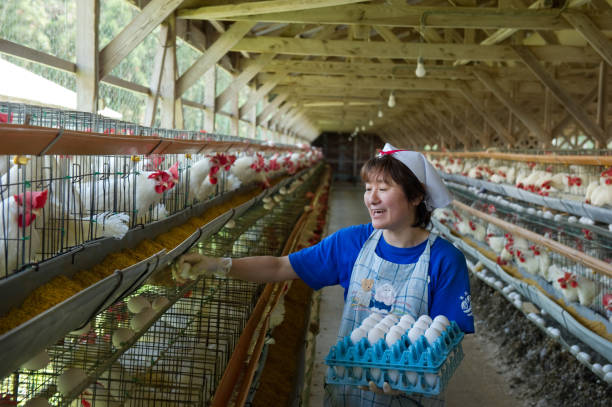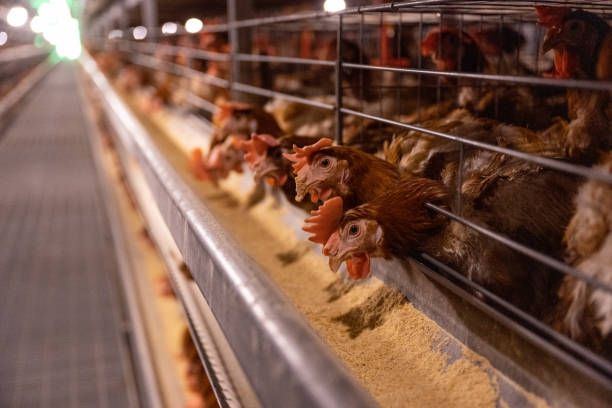
50,000 Bird Poultry Project in Indonesia: Cage System Selection Guide
50,000 Bird Poultry Project in Indonesia: Cage System Selection Guide
Embarking on a 50,000 bird poultry project in Indonesia is a significant undertaking, demanding careful planning and, crucially, the right equipment. The selection of a suitable cage system is paramount to the success of your venture, impacting everything from bird health and productivity to labor efficiency and profitability. This guide aims to provide a comprehensive overview of cage system options, specifically tailored to the Indonesian context, helping you make an informed decision that aligns with your project goals.
Understanding the Indonesian Poultry Landscape
Before diving into cage systems, it’s important to understand the nuances of the Indonesian poultry market. Indonesia is a major consumer and producer of poultry products, with a growing demand for both eggs and meat. However, the market is also characterized by specific challenges, including:
Climate: Indonesia’s tropical climate, with high temperatures and humidity, poses unique challenges to poultry farming. Ventilation and temperature control are crucial considerations when selecting a cage system.
Land Availability: Land can be a scarce and expensive resource in some parts of Indonesia, particularly Java. Intensive farming methods, utilizing cage systems, are often preferred to maximize production within limited space.
Labor Costs: While labor costs may be relatively lower compared to developed countries, efficiency is still key to profitability. Automation features in cage systems can significantly reduce labor requirements.
Regulatory Environment: Indonesian regulations regarding animal welfare, environmental protection, and food safety must be taken into account when designing and operating a poultry farm.
Cage System Options: Layers vs. Broilers
The first step in selecting a cage system is to determine the purpose of your poultry project. Are you focusing on egg production (layers) or meat production (broilers)? The optimal cage system will differ significantly depending on your chosen specialization.
Layer cages are designed to house hens for egg production. They come in various configurations, each with its own set of advantages and disadvantages. The most common types include:
A-Frame Cages: These are the most traditional and widely used type of layer cage. They are characterized by their simple design, relatively low cost, and ease of installation. A-frame cages typically consist of multiple tiers of cages arranged in a row, with a sloping “A” shape that allows for easy egg collection.
Advantages: Affordable, simple to install, good ventilation.
Disadvantages: Can be more labor-intensive for egg collection and manure removal, potentially lower bird density compared to other systems.
H-Frame Cages: H-frame cages are a more modern and sophisticated option. They feature a vertical arrangement of cages, with multiple tiers stacked on top of each other. This design maximizes bird density and utilizes floor space more efficiently. H-frame cages often incorporate automated features such as automatic feeding, drinking, egg collection, and manure removal.
Advantages: High bird density, efficient use of space, automated features reduce labor costs, improved hygiene.
Disadvantages: Higher initial investment, more complex installation, requires reliable power supply for automation.
Stacked Cages: Similar to H-frame cages, stacked cages offer high bird density and efficient space utilization. They are typically designed with multiple tiers of cages stacked vertically, with automated systems for feeding, watering, and manure removal. These systems are often found in larger, more industrialized poultry farms.
Advantages: Very high bird density, maximum space utilization, fully automated, optimized for large-scale operations.
Disadvantages: Highest initial investment, requires specialized expertise for maintenance, dependent on consistent power supply.
Broiler Cage Systems:
Broiler cages are designed to house chickens raised for meat production. Broiler cages are not as common as floor systems, but can be beneficial in specific situations providing better FCRs and higher stocking densities.
Multi-Tier Broiler Cages: Multi-tier broiler cages are designed to elevate broilers off the ground. These may include automated watering and feeding systems and are built to support a short growing cycle.

Advantages: Better FCR through increased bird movement limitation.
Disadvantages: Initial investment; potential for leg problems.
Key Considerations for Cage System Selection
Beyond the basic type of cage system, several other factors must be considered to ensure the optimal choice for your 50,000 bird poultry project in Indonesia:
Bird Density: Bird density refers to the number of birds housed per unit of floor space. Higher bird densities can maximize production, but they can also increase the risk of disease outbreaks and stress among the birds. It’s crucial to strike a balance between maximizing density and maintaining bird welfare.
Ventilation and Climate Control: As mentioned earlier, Indonesia’s tropical climate necessitates a strong focus on ventilation and climate control. The cage system should be designed to promote airflow and prevent the build-up of heat and humidity. Options include natural ventilation, forced ventilation (fans), and even air conditioning in some cases.
Feeding and Watering Systems: Efficient feeding and watering systems are essential for optimal bird growth and egg production. Automatic feeding systems deliver feed to the birds at regular intervals, ensuring consistent nutrient intake. Nipple drinking systems provide a clean and hygienic source of water, minimizing wastage and the risk of contamination.
Manure Removal: Manure management is a critical aspect of poultry farming, both for hygiene and environmental reasons. Manual manure removal can be labor-intensive and unhygienic. Automatic manure removal systems, such as belt systems or scraper systems, can significantly reduce labor requirements and improve overall farm hygiene.
Egg Collection (for Layers): For layer farms, efficient egg collection is crucial to minimize egg breakage and labor costs. Manual egg collection is time-consuming and prone to breakage. Automatic egg collection systems, using conveyor belts, can gently transport eggs from the cages to a central collection point, reducing damage and improving efficiency.
Materials and Durability: The cage system should be constructed from durable, high-quality materials that can withstand the harsh conditions of a poultry farm. Galvanized steel is a common choice due to its resistance to corrosion and ease of cleaning.
Biosecurity: The cage system should facilitate effective biosecurity measures to prevent the spread of disease. This includes easy cleaning and disinfection, minimizing contact between birds and potential sources of contamination, and implementing strict hygiene protocols.
Automation: Assess the level of automation desired and the associated costs and benefits. The higher level of automation in climate control, automated manure removal, automated egg collection, and automated feeding will reduce labor costs.
Supplier Selection: Finding the Right Partner

Choosing the right cage system is only half the battle. Selecting a reputable and reliable supplier is equally important. Consider the following factors when evaluating potential suppliers:
Experience and Expertise: Look for a supplier with a proven track record in the Indonesian poultry market. They should have experience designing, installing, and maintaining cage systems in similar climates and conditions.
Product Quality: Ensure that the supplier uses high-quality materials and manufacturing processes. Ask for references and visit existing installations to assess the durability and performance of their cage systems.
After-Sales Service: A reliable supplier should offer comprehensive after-sales service, including installation assistance, training, maintenance support, and spare parts availability.
Local Presence: A local presence, whether through a branch office or a network of service partners, can be invaluable for timely support and troubleshooting.
Cost-Effectiveness: Don’t just focus on the upfront cost of the cage system. Consider the total cost of ownership, including operating expenses, maintenance costs, and potential for increased productivity and efficiency.
Specific Considerations for Indonesia
In the Indonesian context, several additional factors should be considered:
Local Regulations: Ensure that the cage system complies with all relevant Indonesian regulations regarding animal welfare, environmental protection, and food safety.
Power Supply: Indonesia’s power grid can be unreliable in some areas. Consider investing in a backup generator to ensure continuous operation of automated systems in the event of a power outage.
Labor Availability: While labor costs may be relatively lower in Indonesia, skilled labor for operating and maintaining automated cage systems may be limited. Provide adequate training to your staff to ensure efficient operation and maintenance.
Cultural Considerations: Adapt your farming practices to local cultural norms and practices. This may include providing appropriate breaks for workers during prayer times and respecting local customs regarding animal welfare.
Making the Right Choice
Selecting the right cage system for your 50,000 bird poultry project in Indonesia is a critical decision that will impact the long-term success of your venture. By carefully considering the factors outlined in this guide, you can make an informed choice that optimizes bird health, productivity, efficiency, and profitability. Remember to partner with a reputable supplier who can provide high-quality products, comprehensive after-sales service, and a deep understanding of the Indonesian poultry market. Investing time and effort into selecting the right cage system will pay dividends in the years to come, ensuring a sustainable and successful poultry farming operation.

